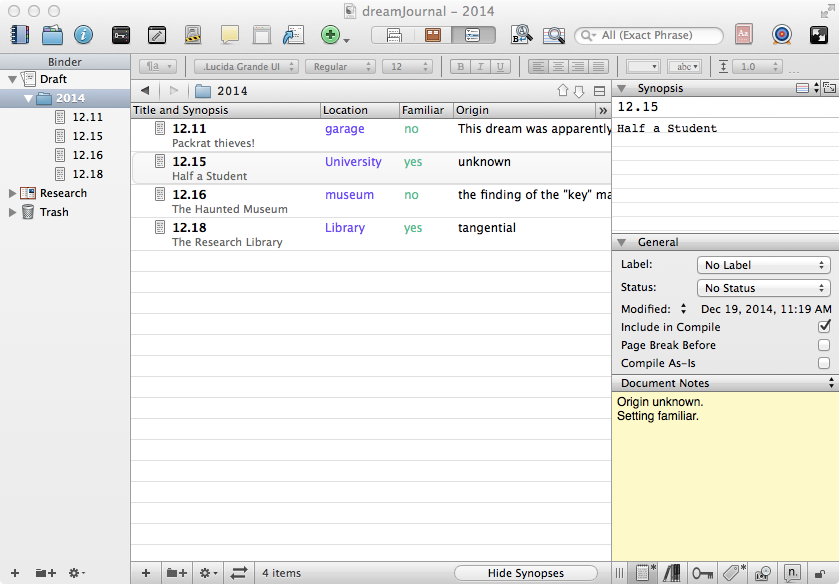Keeping a Dream Journal
My dream journal entries often start out with For reasons I don’t now recall… Likewise, this post: For reasons I don’t now recall, I was looking into dream journaling software earlier this month. Maybe I read something about the advantages of dream journaling for writers during NaNoWriMo season and finally took the time to investigate.
I didn’t like what I saw. The idea of typing dreams into my phone when I’m barely awake and later losing them all to some iCloud disaster or other didn’t appeal, and not much was available on the desktop. Also, the feature list of dream software tends towards the psychoanalytical rather than the creative. I don’t particularly care why I had a dream or what it means to my life; I’m interested in the settings and the crazy plots.
Once upon a time, long, long ago, I kept a dream journal in a notebook. (If I scoured the attic hard enough I might even find it.) Somewhat more recently, I tried keeping a dream journal in a local WordPress instance, but that didn’t last long. Neither one seems appropriate now. If I used note-taking software like DevonNote, it would probably be a good choice for dream journaling, too, but I don’t.
I decided to use something I had lying around already, which would provide some structure and organization to my dream journal, but would not be a new investment or learning curve: Scrivener. I googled unsuccessfully for an appropriate template, so I just started with a blank template.
I journaled for a few days, stuffing some general info I wanted to track into Scrivener’s Document Notes. Next, I deciding to put that info into outliner metadata according to this tutorial from Simply Scrivener. I’d publish a template if it weren’t so easy to do the same thing yourself. Nothing is more complicated than what you see in this picture:





